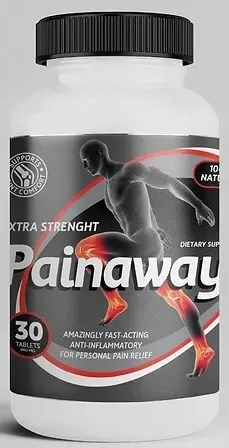Understanding Pain Away Techniques for Children: A Parent’s Guide
Hello, wonderful parents! Watching your child in discomfort can be one of the most challenging experiences. But fear not, as this comprehensive guide is designed to equip you with the knowledge and techniques to help alleviate your child’s pain and bring back those heartwarming smiles. We’ll explore everything from home remedies and natural approaches to professional medical treatments – all in a kid-friendly, pain-away style!
What Causes Pain in Children?
Before we dive into the pain relief methods, understanding what might be causing your child’s discomfort is essential. Pain in children can arise from various sources such as minor injuries, infections, chronic conditions, or after medical procedures. Growing pains are also a common part of childhood that can cause a lot of discomforts. But remember, pain is subjective, and every child’s experience is unique.
Natural Pain Relief Strategies
Many parents prefer starting with natural pain relief strategies before moving on to medication, and for a good reason. These methods are non-invasive, often have fewer side effects, and can be applied in the comfort of your own home. Here are a few to consider:
- Comforting Touch: Never underestimate the power of a soothing hug or a gentle rub. Physical comfort can provide significant pain relief, especially in younger children.
- Distraction Techniques: Engaging your child in a favorite activity, be it a game, story, or movie, can redirect their focus and lessen the perception of pain.
- Warm Baths: A warm bath can soothe sore muscles and calm the mind, providing both physical and emotional relief.
- Age-Appropriate Meditation or Yoga: Teaching your child simple relaxation techniques can help manage pain and provide them with a tool they can use anytime.
When to Consider Medication
While natural methods can be very effective, sometimes they might not be enough. If your child is still in significant discomfort, it may be time to consider over-the-counter medications or consult your pediatrician. Medication should always be used under the guidance of a healthcare professional, with proper attention to dosing and potential side effects.
From acetaminophen to ibuprofen, your doctor can recommend the safest and most appropriate medication for your child’s specific situation. Remember to look into child-specific formulations and always stick to the recommended dosage.
Professional Pain Management
If your child’s pain persists or is related to a chronic condition, professional pain management might be necessary. Pediatric pain management clinics and specialists can offer a range of services, from physical therapy to psychological support.
Stay tuned as we delve deeper into each of these pain relief methods, unpack the safety concerns, and guide you through the most effective pain-away strategies for your child. Every little superstar deserves to live a carefree life filled with play, laughter, and joy—let’s make that possible together!
Hang in there, let’s journey through the rest of our guide!

5 Essential Tips for Preparing Your Child for Pain Relief
Greetings, nurturing parents! While dealing with a child’s pain is no small feat, preparing properly can make the world of difference. Let’s dive into some top-notch tips that will have you at the ready to tackle pain so your kiddo can get back to the joyful business of being a child!
Build a Pain Relief Toolkit
It’s genius to have a ‘pain-away toolkit’ on hand. Think cozy blankets, favorite plush toys, and other comforting items that can soothe your child. It’s not just about having the tools, but knowing how to use them to create a warm environment that reassures your little one that they are safe and loved.
Master the Art of Distraction
Sharpen your skills in distraction, a nifty technique in your parenting arsenal for managing pain. Whether it’s through storytelling, crafting, or a bit of magic with their favorite cartoon, your ability to shift their focus away from discomfort is paramount. Offering a fun variety of activities can keep their minds engaged and spirits lifted!
Learn About Age-Appropriate Pain Relief Options
Every age group has its matching pain relief methods. Tiny tots might do well with teething toys, while older children could benefit more from interactive apps designed to manage discomfort. Keep abreast of the pain relief options that suit your child’s age and developmental stage to provide the most effective comfort.
Understand and Communicate About Pain
Understanding pain involves knowing how to talk about it with your child. Using age-appropriate language, ask them about where it hurts, how it feels, and what might make it better. Good communication helps you assess the situation accurately and lets your child know you’re taking their pain seriously.
Establish a Comforting Pre-Medication Routine
When medication is necessary, the way you present it can make all the difference. A comforting routine – maybe a little cuddle time or a special song played beforehand – can help associate the medicine-taking process with positive feelings, making it less daunting for your munchkin.
From understanding the variety of available Pain Away approaches to communicating effectively about discomfort, your preparation is as essential as the pain relief methods themselves. Getting ready to help your child through pain involves empathy, creativity, and a smidge of fun to ensure you’re both ready for the journey towards relief and healing.
And there you have it, a handful of handy tips to prepare you and your child for Pain Away success. Next up, we’ll explore each relief method in detail, ensuring you’ve got all the know-how needed to manage those ouchies like a pro!
For more great articles please see here. For more information see here
Disclaimer
The articles available via our website provide general information only and we strongly urge readers to exercise caution and conduct their own thorough research and fact-checking. The information presented should not be taken as absolute truth, and, to the maximum extent permitted by law, we will not be held liable for any inaccuracies or errors in the content. It is essential for individuals to independently verify and validate the information before making any decisions or taking any actions based on the articles.




